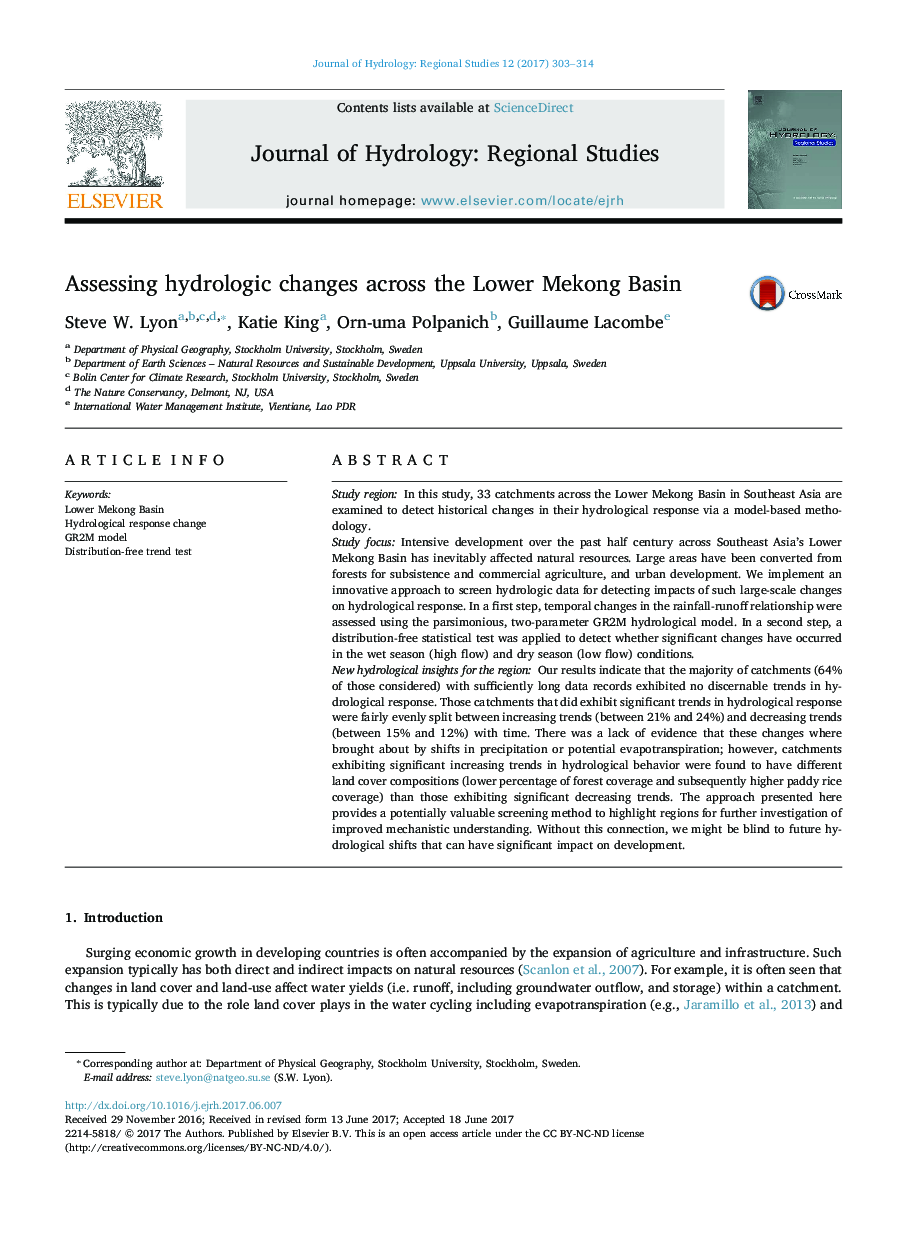| Article ID | Journal | Published Year | Pages | File Type |
|---|---|---|---|---|
| 5752373 | Journal of Hydrology: Regional Studies | 2017 | 12 Pages |
Abstract
Our results indicate that the majority of catchments (64% of those considered) with sufficiently long data records exhibited no discernable trends in hydrological response. Those catchments that did exhibit significant trends in hydrological response were fairly evenly split between increasing trends (between 21% and 24%) and decreasing trends (between 15% and 12%) with time. There was a lack of evidence that these changes where brought about by shifts in precipitation or potential evapotranspiration; however, catchments exhibiting significant increasing trends in hydrological behavior were found to have different land cover compositions (lower percentage of forest coverage and subsequently higher paddy rice coverage) than those exhibiting significant decreasing trends. The approach presented here provides a potentially valuable screening method to highlight regions for further investigation of improved mechanistic understanding. Without this connection, we might be blind to future hydrological shifts that can have significant impact on development.
Keywords
Related Topics
Physical Sciences and Engineering
Earth and Planetary Sciences
Earth-Surface Processes
Authors
Steve W. Lyon, Katie King, Orn-uma Polpanich, Guillaume Lacombe,
